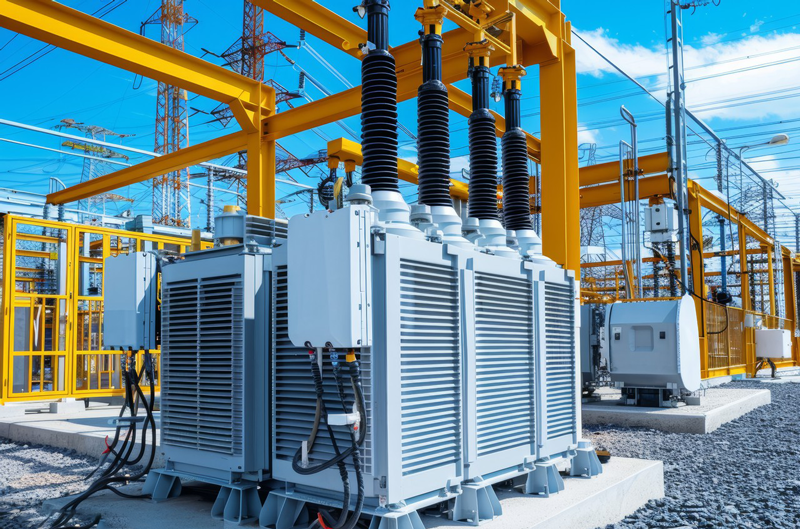Electrical equipment plays a vital role in converting various energy sources (such as solar, wind, and nuclear power) into electricity. However, this process inevitably generates significant heat. If heat dissipation is inadequate or delayed, it can lead to reduced equipment performance, increased failure rates, or even safety incidents. Therefore, designing an efficient and safe ventilation and cooling system is crucial for ensuring the reliable operation of electrical equipment.
Importance of Ventilation and Cooling in Electrical Equipment

Technical Considerations for Electrical Equipment Cooling Fans
Types of Cooling Fans and Their Features
Axial Fans: These fans are known for their high airflow and low power consumption. They are ideal for equipment like transformers and switchgear, which require efficient cooling. For example, Ruiapple Electric’s axial fan model 15KM features a metal blade design, making it suitable for environments with significant temperature fluctuations. It has been tested through temperature cycles ranging from -40°C to 70°C to ensure stable performance in extreme conditions.
External Rotor Fans: External rotor axial fans (e.g., UF250BMB) are specifically designed for electrical equipment. They offer enhanced cooling efficiency and durability, making them widely used in inverters and other high-density devices.
Installation and Maintenance of Cooling Fans
Future Development of High-Performance Cooling Fans
As the power industry evolves and new energy sectors such as smart grids and renewable energy continue to rise, the cooling demands of electrical equipment will become more complex and diverse. The future of high-performance cooling fans will focus on the following trends:
Smart and Automated Solutions: Integrating advanced sensors and control systems will enable intelligent speed control and remote monitoring, ensuring real-time transparency of equipment status and further reducing maintenance costs.
Efficient, Low-Energy Designs: Given global energy shortages, high-efficiency fans will be designed to optimize energy consumption while delivering superior cooling performance, helping users lower operational costs.
Adapting to Special Application Needs: In new energy applications, such as solar inverters and wind turbines, cooling fans will focus on material innovation and environmental adaptability to meet increasingly stringent cooling requirements.
Ruiapple Electric’s Brand Advantage
Ruiapple Electric specializes in the research and development of high-performance cooling fans. With 24 years of industry experience, its products are widely used in transformers, switchgear, inverters, and other electrical equipment. Ruiapple fans are made from high-quality metals and undergo rigorous environmental testing, offering a lifespan of 50,000 to 70,000 hours. Additionally, Ruiapple provides customized fan designs to meet the unique needs of clients, offering efficient, reliable cooling solutions.
Choosing Ruiapple Electric means selecting not only a fan but also a brand dedicated to quality and innovation, providing the best ventilation and cooling protection for your electrical equipment.






